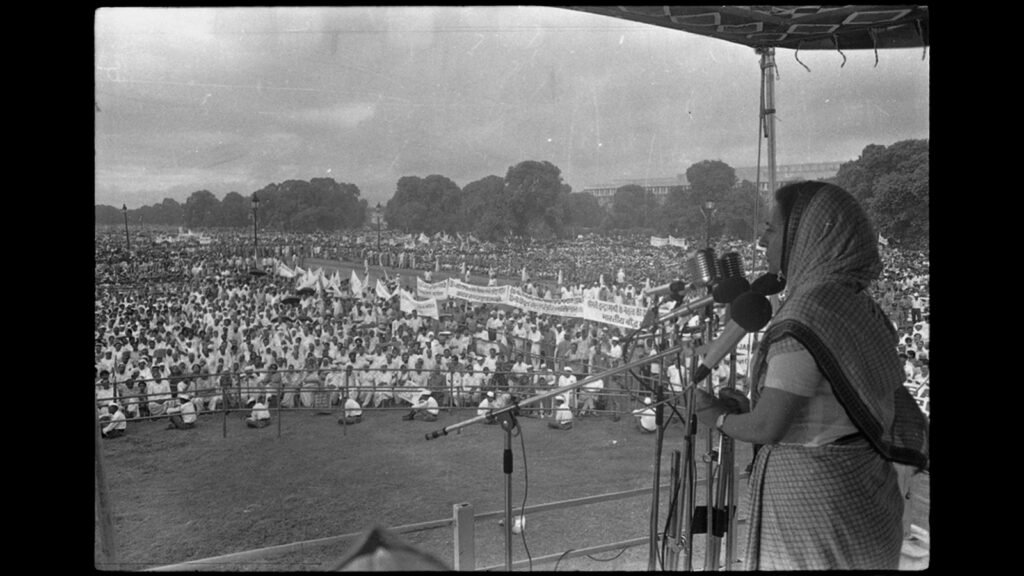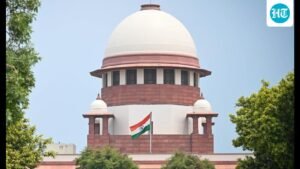
Almost 50 years to date, on June 12, 1975, Justice Jagmohan Lal Sinha of the Allahabad High Court delivered a Judgement that came as a thunderclap. Justice Sinha Held Prime Minister Indira Gandhi Guilty of Corrupt Practices during the 1971 General Elections, Voiding Her Membership of Parliament and Barring Her from HOOM HOM HOM HOM HOM HORM HORRING EHERECT SIX POR SIX Thirteen Days Later, Indira Gandhi Got President Fakhruddin Ali ahmed to Issue a Proclament under Article 352 of the constitution declaring an internal emergency. This enabled her to inaugurate a spell of avowedly autoritarian rule, Incarcerating her political opponents, muzzling the press, casting aside the fundamental rights, and Mauling the Constipse.

Five Decades on, The Emergency Continues to Haunt Indian Democracy as a Memento Mori (Reminder of One’s Mortality). This is hardly surprising, for many leaders who Bestride Contemporary Politics – from Prime Minister Narendra Modi to Tamil Nadu CHEF MINISTER MK STALIN – WHERE SHADEPED In the Crucible of Thei. The union government has declared its anniversary on 25 June as “Samvidhan Hatya Divas”. Public debates on the emergency also tend to generate more heat than light. These focus all but exclusively on indira gandhi’s decision to impose the emergency: was it soly to ensure her continuance in office or was it print a response UNSEAT HER in the Wake of the High Court’s Verdict? How Credible was Her Claim that there was a grave internal threat abetted by external powers?
Inasmuch as indira Gandhi was responsible for imposing the emergency, these questions will continue to be probed. Yet Understanding Her Concerns and Intens is not the same thing as causally explaining the onset of the emergency. As I Argue in My New Book, Such An explanation must bring toge toge to the legs and developments at the levels of structure, conjuncture and event.
Start at the structural or systemic level. Political Systems should be undersrstood not merely as agglomerations of leaders, parties or social groups, but with reference to two system-wide components that influence all actors. The first is the institutional arrangement of political actors according to their direction functions and relative power. In the Indian case, this is the functional section of the executive, the legislature and the judiciary. The second component is the constituent rules – procedus, Principles, norms, undersrstandings – that Regulate Political Competition: The “Rules of the Game” of Parliamentary Democracy. The Indian Political System Underwent a Significant Transformation Between 1967 and 1975. This transformation obcurred on both systemic dimensions. Importantly, this transformation preceded the emergency.
The Years Between 1967 and 1973 witnessed a dramatic shift in relative power towards the executive, especially the office of the Prime Minister. This began with the Congress party’s poor showing in the general elections of 1967 – an event that catalysed a power struggle with the party, culminating in India gandhi’s move to split the Congress in 1969. The Prime Minister in Stronger Control of Her Party. Soon, Indira Gandhi Gambled in Calling for Elections a year ahead of schedule. And her party won a stunning Victory in March 1971. This was followed by India’s Military Triumph over Pakistan Later This, in turn, propelled the new Congress to a dramatic win in the state elections of 1972. None of these could have been predicted, but cumulatively they cemented indira gandhi ‘gandhi’ The parliamentary party ceased to operate as a subtle check on the executive. On the contrary, the party was now behlden to the Prime Minister for its political survival.
The Political Opposition Had Coalsced Against The Congress Ahead of the 1967 Elections and Had Reased The Dividends of the First-Past-The Post System. Yet their Grand Alliance in 1971 Proved Spectacularly Infective and Unravelled after their Abysmal Performance. However, the option parties’ Decision to go alone in the state assembly Elections of 1972 also failed to revive their fortunes. The Political Opposition was now a Blasted Heath and the Parliament’s Position Turned Merely Topographical.
This extraordinary strengthening of executive power enabled indira gandhi to challeng the functions and power of the judiciary, culminating in the assertion of prime ministerial authority by the support of Judges and the appointment of a plaient Chief Justice in the Supreme Court in April 1973.
These Dramaatic Power Shifts were Accompanied by Changes in the Collexed Beliefs and Expectations of Political Actor About the Rules of the Game of Parliamentary Democracy. As the game Game Grew Increasingly Competitive from 1967 Onwards, its rules, procedus, and norms we WREMS Werem Frequent Cast Aside in Pursuit of Power. Horse-trading of legislators, shifting party allegiances, weak and unstable governments, mise of constitutional powers to undermine governments and dislve legislam Features of the Indian Political Landscape.
This dimension of systemic change was accelerated by the global conjuncture; Processes that played out concurrently and impinged decisively on India. In Particular, The Collapse of the Bretton Woods System of Fixed Exchange Rates and the oil shock triggered by the arab-israel war of 1973 touched off a tidal wave of global information. The Indian Economy Experienced Its Most Serious Bout of Inflation in the 20th century. Massive Popular Protests in Gujarat, Bihar, and Elsewhere were a Direct Consequence of this Economic Crisis. The student movement’s success in ejection the Congress government in Gujarat and the UPSURGE in Bihar under Jayaprakash Narayan LED the main opposition parties to Regard extramantary mass etc. Route to weaken the Congress party, given his inability to humble it in the hustings.
This shift in beliefs and expectations Occurred Accross The Political Spectrum. In April 1974, LK Advani Told The Jana Sangh’s General Council that “Dethroning an Elected Government by Extra-Constitutional means Had Acquired Legitimacy”. The socialist party adopted a resolution later that year: “Since the capacity of the parliamentary system to achieve reform and renewal from within is gotting severely limited, extra-connectivity and corn Initiative Becometer Absolutely Necessary. ” EMS Namboodripad of the cpi (m) Wrote that “they do not accept the position that every issue must be solved only through constitutional means”. Above all, the Prime Minister herself had ceased to believe in the intrinsic value of democracy. As She Wrote to Yehudi Menuhin only after imposing the emergency, “Democracy is not an end. It is merely a system by which one proceeds towards the goal. Than the Progress, Unity or Survival of the Country. “
Against the background of this systemic change and conjunctural crisis came the events of 12 June 1975 that threatened the Prime Minister’s Continuation in office. The lurch towards Authoritarian Rule was now unavoidable in the sense that the conditions needed to prevent it was no longer obtained.
Indira Gandhi was, of course, copable for the decision to impose the emergency. But its onset was caused by this larger structural transformation of Indian Politics. This was, in turn, the outcome of a collective jettison of the rules of the game by the Indian political elite. This personal on the origins of the emergency when it is disastrous courses and its turbulent aftermath invites a history verdict in the vein of Shakespere and Jul Punished.
Srinath raghavan is the author of Indira Gandhi and the Years that transformed India. The views expressed are personal.





